Actions to Reduce Potential Lead Exposure
Información relacionado en español.
Lead exposure and lead poisoning are preventable with simple actions to protect children and our communities. It is important to protect young children (under age six) from lead exposure because their growing bodies are especially vulnerable to the harmful and permanent impacts of lead.
Here are several actions you can take now to reduce exposure to lead and benefit the overall health of your loved ones and communities.
On this page:
- Keep Homes Clean & Dust Free
- Eat a Diet High in Iron, Calcium Vitamin C
- Wash Hands
- Play in Grass
- Hire Certified Professionals
- Shower & Change
- Wash Toys, Pacifiers & Bottles
- Run Your Water
- Get Your Child Tested
- Actions to Reduce Lead Exposure Infographic
Keep Homes Clean & Dust Free
-
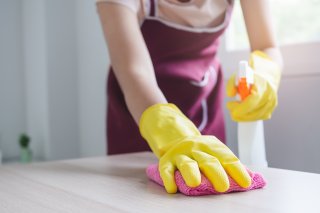
- Wet mop floors and hard surfaces like porches to minimize lead dust.
- Wipe down hard surfaces such as countertops, windowsills and door jambs with a wet cloth.
- Inspect and maintain all painted surfaces to guard against deterioration.
- Clean the area immediately with a wet wipe if you notice any peeling, chipping, chalking or cracking paint.
Eat a Diet High in Iron, Calcium & Vitamin C

- Eat a well-balanced diet of fruits, vegetables, grains, dairy and protein-rich foods. Foods that are higher in calcium, iron and vitamin C can help reduce the body’s absorption of lead. Children with healthy diets absorb less lead.
- Wash all food thoroughly with safe water sources prior to eating. This will remove soil or lead dust that may be on its surface.
- Do not eat food or drink water that has been cooked or stored in chipped or cracked lead-crystal, lead-glazed pottery or lead-porcelain cookware.
- Use only cold water for drinking, cooking and preparing baby formula. Heat up cold water on the stove or in a microwave if hot or warm water is needed. Use water from a safe source to mix baby formula. Boiling water does not remove lead from water.
- Know the sources of natural ingredients and herbs before using them to prevent exposure to lead through ingestion or breathing.
Wash Hands
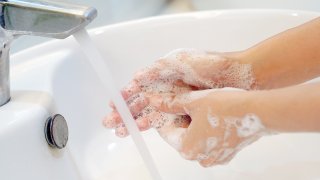
- Use soap and water (warm or cold) to wash children’s hands several times a day, especially after playing outside or with animals.
- Adults should wash their hands after participating in activities in which they may have come in contact with lead.
Play in Grass

-
Guide children to play in grassy or non-contaminated bare soil areas, especially if play areas are near roadways, junk yards, older buildings or uncontrolled or abandoned sites or properties.
- Use designated picnic, camping and hiking areas.
- Teach children to wipe and remove their shoes and wash their hands after playing outdoors.
- Wipe down pets’ paws prior to bringing them indoors.
- Place dust mats both inside and outside your home to avoid tracking dust, which may contain lead, inside.
Hire Certified Lead Professionals

- For homes built prior to 1978, hire a certified lead professional for renovation and repair work. Keep residents out of the work area during renovation or repair work that disturbs painted surfaces in older homes or buildings until the work is finished and the area has been cleaned.
- When having home renovations, repairs or painting done, make sure your contractor is Lead-Safe Certified and follows lead-safe work practices per the requirements of EPA’s Renovation, Repair and Painting Rule. These professionals have been trained in lead-safe work practices and are certified to perform this type of work.
- If you are renting your home or apartment and think it may contain lead-based paint or lead hazards, make sure your landlord or tribal housing authority hires a Lead-Safe Certified contractor to perform renovation, repair and painting work.
- If you decide to perform your own renovation, repair and painting work, use lead-safe work practices for do-it-yourself (DIY) home renovation projects to protect yourself and your family from lead exposure.
Shower & Change
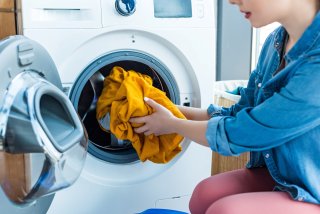
- Clean or remove work clothes and shoes before entering your home to avoid tracking in lead from soil, work sites or hobbies. If possible, store work clothes and shoes in a designated area outside the home.
- Wash work clothes separately from other family members’ clothes.
- Shower after participating in activities in which you may have been exposed to lead to remove any lead dust from your skin and hair.
Wash Toys, Pacifiers & Bottles
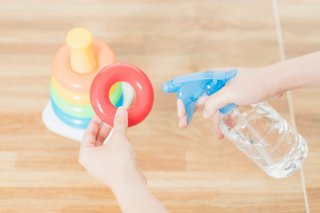
- Wash daily any items that your children use regularly, such as pacifiers, bottles, and stuffed animals and other toys to minimize exposure to dust, which may contain lead.
- Do not let children chew on painted toys, windowsills or other painted surfaces.
Run Your Water
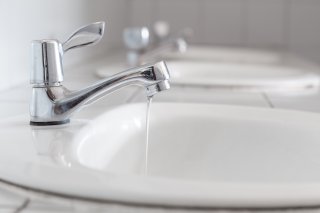
- Before drinking or cooking, flush your home’s pipes by running the tap, taking a shower, doing laundry or running the dishwasher.
- The amount of time recommended to run the water depends on whether your home has a lead service line and the length of the lead service line. Residents should contact their water utility for recommendations about flushing times in their community.
- The lead service line is the pipe that runs from the water main to the home’s internal plumbing. Lead service lines can be a major source of lead contamination in water.
- Use only cold water for drinking, cooking and making baby formula. Remember: boiling water does not remove lead.
- Use a water filter that is certified to remove lead. Read the directions to learn how to properly install and use the cartridge and when to replace it. Using the cartridge after it has expired can make it less effective at removing lead. Do not run hot water through the filter.
- Clean your faucet’s screen (also known as an aerator) regularly. Sediment, debris and lead particles can collect in the aerator. If lead particles are caught in the aerator, lead can get into your water.
- Contact your water utility or a licensed plumber to determine if the pipe that connects your home to the water main (also known as a service line) is made from lead.
- Contact your water utility to have your water tested and to learn more about the lead levels in your drinking water. Learn more about lead in drinking water here.
- If your drinking water comes from a private well or cistern, check with your health department or local water utility for information on the water in your area.
- Be aware of any construction or maintenance work that could disturb your lead service line. Construction may cause more lead to be released from a lead service line.
Get Your Child Tested

No safe blood lead level in children has been identified. The only way to find out if a child has lead in their blood is to take them for a blood lead test. A child with lead in their blood may not have visible signs or symptoms and in fact many children who have lead poisoning look and act healthy. The Centers for Disease Control and Prevention (CDC) recommends children get tested at 12 and 24 months of age (blood lead tests are required at 12 and 24 months for children who receive Medicaid). To learn more about getting your child tested, visit the CDC’s webpage on blood lead levels in children.
- Take this postcard with you to your child’s next appointment and ask your medical provider to give them a blood lead test.
Download the Actions to Reduce Lead Exposure Infographic
The Actions to Reduce Potential Lead Exposure Infographic is a visual aid with eight actions you can take to reduce and prevent your family’s potential exposure to lead. These actions, and many more, are highlighted and discussed throughout the Lead Awareness Curriculum, a set of educational resources to reduce lead exposure in communities.
Click the image to download a copy of the infographic.

